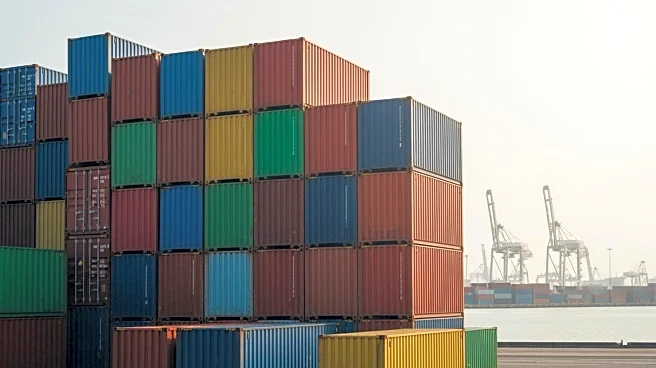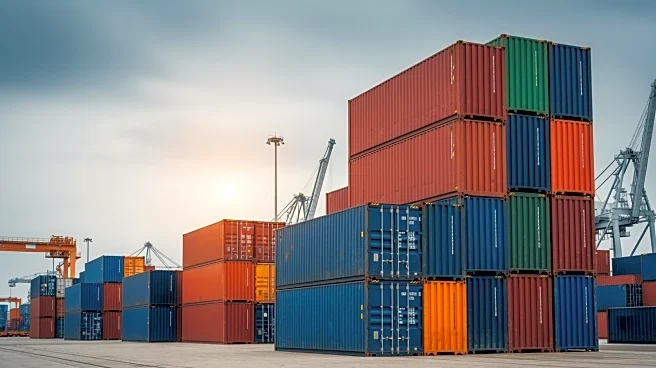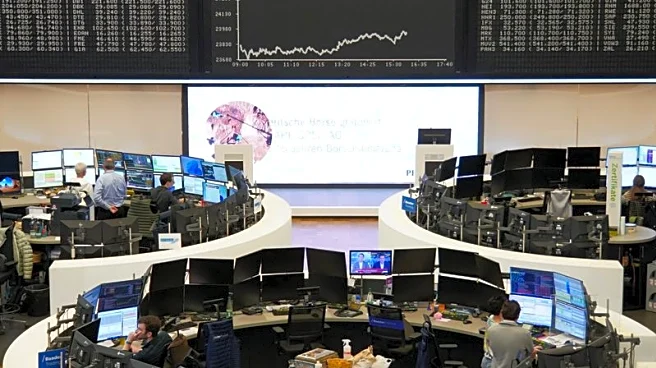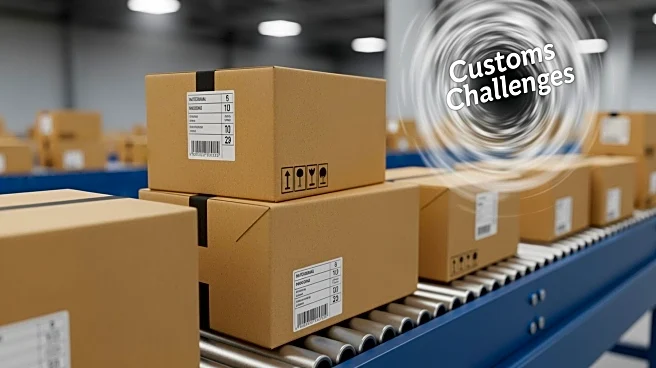What's Happening?
U.S. container imports experienced a decline of 8.4% from August, with imports from China falling significantly due to new section 301 vessel fees and the impending expiration of the U.S.-China tariff
truce. Major import categories such as aluminum, footwear, and electric machinery saw steep declines, while plastics showed resilience. The decline in imports is attributed to trade policy uncertainties and increased shipping costs, affecting planning and logistics for U.S. businesses.
Why It's Important?
The decline in container imports highlights the impact of trade policy uncertainties on U.S. businesses and the logistics industry. With new tariffs and fees affecting costs, businesses may face challenges in maintaining supply chains and managing inventory. This situation underscores the importance of stable trade relations and policies to support economic growth and prevent disruptions in the supply chain. The resilience of U.S. ports despite these challenges indicates a strong demand for imports, but ongoing uncertainties could affect future planning and investment.
What's Next?
As the U.S.-China tariff truce expiration approaches, businesses may need to reassess their import strategies and explore alternative sourcing options. The legal challenges to the Liberation Day tariffs and the U.S. government shutdown could further complicate trade compliance and economic data releases. Stakeholders in the logistics and trade sectors will likely monitor these developments closely to adapt to changing conditions and mitigate risks associated with elevated trade policy uncertainties.












